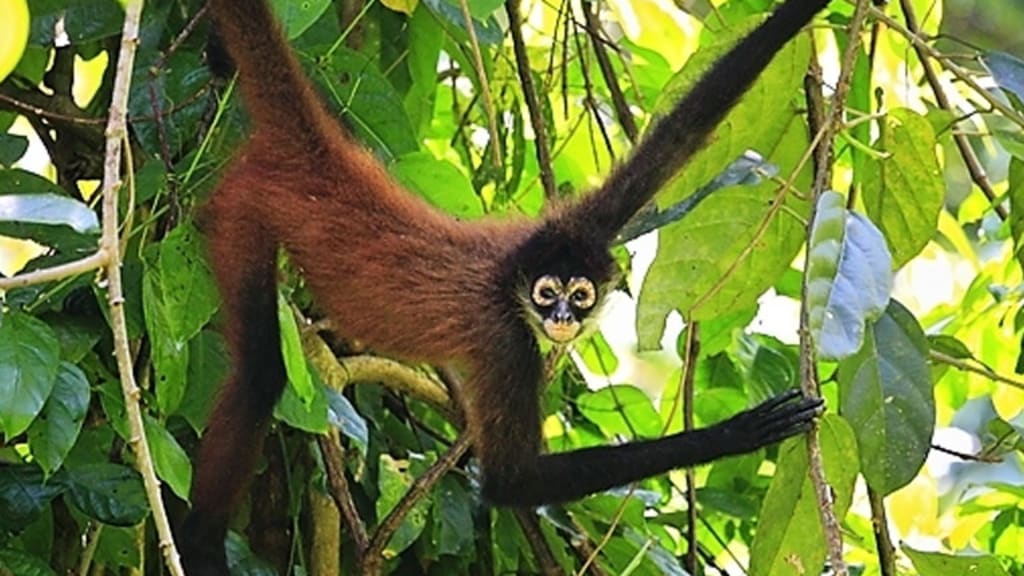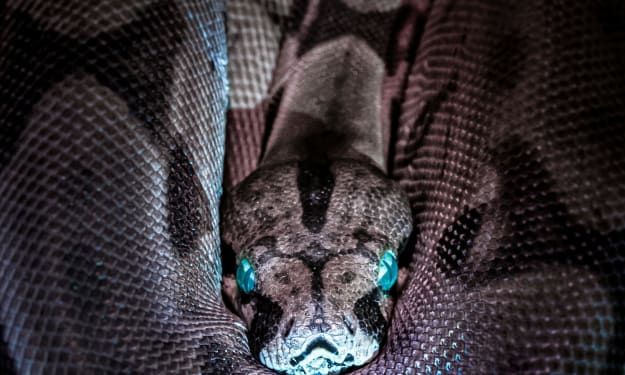The Super Agile, Long-limbed Spider Monkey of Costa Rica!
Known for its navigational command of the jungle, this specie of monkey looks like he's made of rubber! Very L-O-N-G Arms, Legs & Tail make for many acrobatic moves!

The "Central American Spider Monkey" or sometimes called, "Geoffroy's Spider Monkey" is found in many of the tropical forests throughout the Central America area, including, of course, Costa Rica. These beautiful monkeys are one of the most agile species! Their name comes directly from their appearance. . they have disproportionately long arms and legs. . and a very long tail, all tools used by them to enjoy a wonderful, energetic life!
These large, loose-limbed spider monkeys are known for their acrobatic feats through the trees of Central American rain forests. Ranging in color from a light copper to solid black, this monkey can reach up to 5 feet in length and has developed very long, flexible limbs to accommodate its lifestyle. Spider monkeys have a prehensile tail that serves very well as a fifth hand. This is used to hold on to tree branches and hang upside-down, sideways and in other unique positions. This spectacular extremity is up to 3 feet long, reaching much further than the length of the spider monkey's entire body. It also has skin grooves on the underside, which aid perfectly in gripping trees after they make extraordinary-long leaps from branch to branch and from tree to tree. They can weigh up to 15 pounds.
After the sun goes down, spider monkeys sleep together in large groups in the trees. During the day, they are not sociable at all compared to other primates. The males are solitary, marking their territories with scents from their chest glands, while the females care for their infants, which always seem to ride on the backs of their mothers. Spider monkey troops can have up to 40 members!
Spider monkeys were once found throughout the forests of Central America. However, human encroachment has led to a reduction in this primate’s range, as disturbances such as habitat degradation, deforestation and poaching for their meat continue to deplete the population. Upon coming across a human in their jungle habitat, it may screech, bark and forcefully shake the branches in a fierce demonstration of its fearlessness.
They live in cloud forests, rain forests, tropical dry forests and woodland areas. They are deemed to be 'endangered'. However, as you probably know, the Costa Rican government spends millions of dollars every year protecting endangered species. Because of these strong efforts by both the Government and international animal groups, they are continuing to make a promising comeback!
All of these handsome creatures seem to have a distinctive pot belly and gangly arms that are much longer than their legs. They feed on fruit, nectar, leaves, bark and insects. Spider monkeys are less common than howlers and capuchins and their largest populations are concentrated in protected areas, such as Corcovado National Park, Monteverde Cloud Forest and Tortuguero. Curu Wildlife Refuge on the Nicoya Peninsula, is another excellent spot to see these animals. A special reserve area was created especially for spider monkeys. And they are abundant for all to enjoy!
Although spider monkeys seem harmless and so adorable, keep in mind that they are wild animals. The very tall and strong primates often become violent toward humans who try to domesticate them. If kept isolated in captivity, the monkeys develop mental problems that cause them to bite, choke and harm people. So DON'T try to keep one as a pet and domesticate it! You'll be very sorry that you tried!
In other countries where these animals are hunted for food, spider monkeys that have been shot with arrows sometimes try remove the arrows with their hands and even try to stop the bleeding. They DO NOT tolerate humans. When close, they will break off big tree branches and drop them on intruders. They bark like rabid dogs when approached. They also produce many other sounds. When separated from other members of their troop, they call to one another in a whinnying voice, sounding just like a horse. They are also capable of scary, long, loud screams. If you're trying to take a nap and your home is close to their habitat, you better be a heavy sleeper!
With hundreds of thousands of species of animals, Costa Rica will continue to fascinate you with her bounty. Do yourself a favor and search out as many species of animals in the wild as you can when visiting Costa Rica. Take a lot of photos and bask in the glory of one of the most biodiverse countries in the entire world.
You're invited to visit our websites at: www.costaricagoodnewsreport.com & www.costaricaimmigrationandmovingexperts.com
Also, please enjoy our over 2,000 episodes of our "Costa Rica Minute / Costa Rica Pura Vida Lifestyle Podcast Series". We are found on all major podcast venues, including iHeartRADIO, Spotify, Apple Podcasts, Google Podcasts, Radio FM, Anchor & many more. Here's our link: www.anchor.fm/costa-rica-pura-vida
About the Creator
William "Skip" Licht
Costa Rica is a magical place. Since November, 2002, when I first visited this country, I have been in love with the people, the culture, its biodiversity, the food. . everything about it makes me happy! Now I share my excitement with you!






Comments
There are no comments for this story
Be the first to respond and start the conversation.